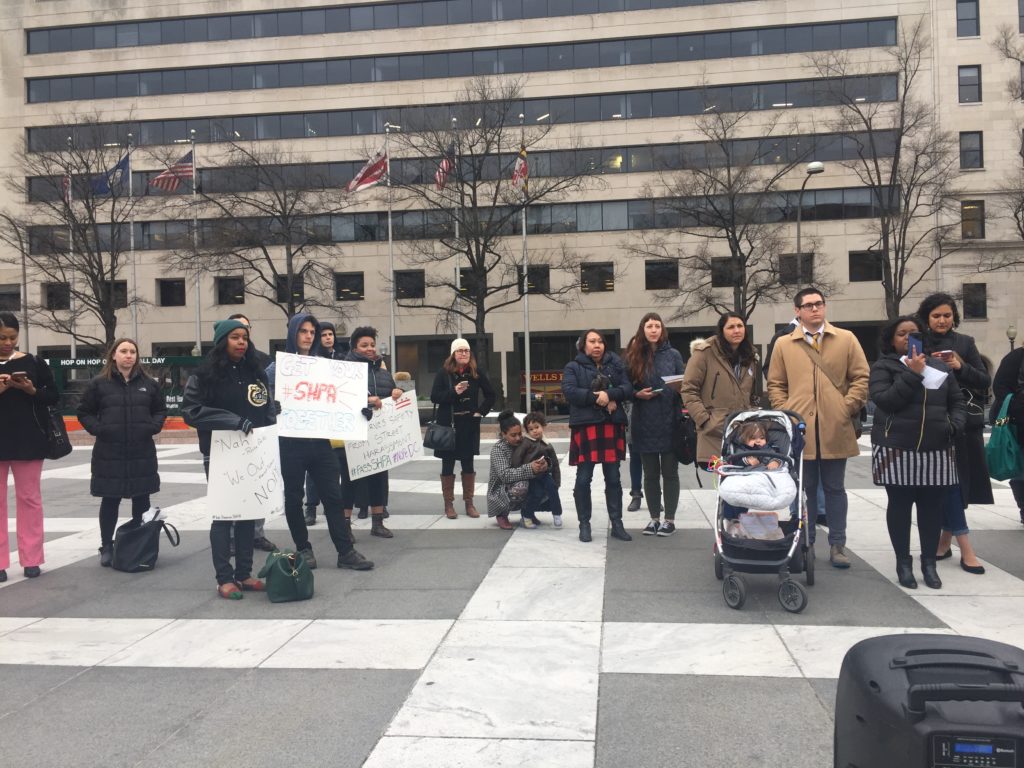
The Council of the District of Columbia recently passed the Street Harassment Prevention Act of 2018 (SHPA), the first legislation of its kind in the United States. It is one of more than 20 laws addressing street harassment to pass globally since 2012, and laws are under consideration in a dozen more places.
The SHPA is groundbreaking in creating the first legal definition of street harassment in the United States, calling it “disrespectful, offensive or threatening statements, gestures or other conduct directed at an individual in a high-risk area without the individual’s consent and based on the individual’s actual or perceived … protected trait identified in the [DC] Human Rights Act of 1977.” It also uniquely focuses on prevention through education instead of criminalization.
Specifically, the SHPA establishes an advisory committee on street harassment that will propose model policies and training materials to be implemented in the District; require the Office of Human Rights (OHR) to conduct the first citywide survey on street harassment; and require OHR to conduct a public information campaign about street harassment. Further, grant money will be provided for street harassment awareness programs.
The advocacy organization Collective Action for Safe Spaces (CASS), which uses community-based solutions through an intersectional lens to address street harassment, was instrumental in the passage of SHPA. Deputy director Chantal Coudoux noted that one of its strengths is that is was “developed and advocated for by directly impacted community members and organizations led by survivors of harassment and assault” through speak-outs and in-person and online story-sharing.
Read how SHPA compares to laws elsewhere in this article I wrote for Women’s Media Center.

DC Councilmember Brianne Nadeau introduced the SHPA and did an interview for me about it.
HK: Why did you feel it was important to see the Street Harassment Prevention Act pass?
BN: I pushed for the first-ever Council roundtable hearing on street harassment, and introduced this bill because I experienced this kind of harassment on a regular basis, and so did many of the women I spoke to. At the hearing, Councilmembers heard heartbreaking stories that really demonstrated how pervasive street harassment is for many of our vulnerable populations. The District is a place where everyone should feel welcome, but the unfortunate truth is that street harassment is a shared experience facing many of our vulnerable populations.
HK: What do you think has led Washington, D.C. to be a leader in the USA on addressing street harassment?
BN: I think it took women being in power and feeling like their concerns would be taken seriously, as well as strong support from organizations in the community. It’s not an issue that’s unique to Washington, but there was a political will to deal with the issue, and strong community based organizations working on this issue like Collective Action for Safe Spaces who were instrumental in helping craft this bill.
Our understanding is that this is the first time any US state or city has legally defined street harassment. There are existing laws that are sometimes applied when street harassment is taking place, but they’re typically laws that are about other kinds of assault or harassment. Our understanding is that this is the first time a US state or city has legally defined street harassment, the first citywide data collection on the issue in the US and the first law to address the issue without criminalization. Again, our understanding is that most other countries have tried to implement fines for street harassment so this is the first to address street harassment without criminalization. Here is an article that has some good information: Citylab
HK: What do you hope DC will look like in 5 years because of the law?
BN: We wrote this bill while being sensitive to the fact that young people, members of the LGBTQ community, people from communities of color, people experiencing homelessness, and people from low-income communities experience more frequent and severe harassment. The law is focused on education and culture change because any solution to the problem shouldn’t be an excuse to disproportionately target those same communities through criminalization.
The legislation establishes an advisory committee which will develop policies, guidelines and procedures to educate District employees to identify and address street harassment; evaluate and make recommendations regarding reporting street harassment; and conduct a survey to collect data so that we have a better understanding on the pervasiveness of street harassment. Grant money will be provided for street harassment awareness programs. The bill targets areas where harassment is more common such as public transportation, cabs and ride-sharing services, bars, restaurants, night clubs, schools, colleges, sidewalks, parks and other public spaces.
This law sends a strong message that harassing one another on the street is not something that Washingtonians will stand for. In five years, I hope street harassment is much less common than it is today. I want people who have experienced harassment to feel safer on our streets and I want all residents to understand what street harassment is, to understand how to call it out, and how to intervene. In five years, I hope our culture shifts and it’s viewed as an unacceptable public behavior, as it should be.
